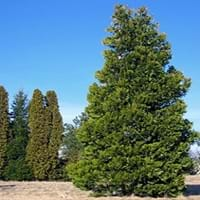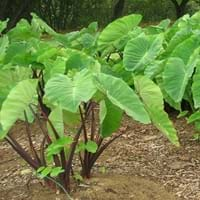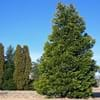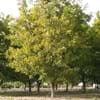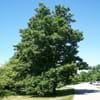Life Span
Annual and Perennial
Annual
Type
Tree
Tender Perennial
Origin
Western United States, California, Mexico
Southeastern Asia
Types
Not Available
Eddoe taro, Dasheen taro
Number of Varieties
Not Available
Habitat
low mountains, Mountain tops, Subtropical climates, Temperate Regions
agricultural areas, Hillside, Warm and moist climatic conditions
USDA Hardiness Zone
5-8
10-11
Sunset Zone
1a, 1b, 2a, 2b, 3a, 3b, 4, 5, 6, 7, 8, 9, 10, 11, 12, 14, 15, 16, 17, 18, 19, 20, 21, 22, 23, 24
H1, H2, 22, 23, 24
Habit
Upright/Erect
Clump-Forming
Flower Color
Non Flowering Plant
White, Green
Flower Color Modifier
Bicolor
Not Available
Fruit Color
Sandy Brown
Red
Leaf Color in Spring
Green
Dark Green, Ivory
Leaf Color in Summer
Green
Dark Green, Ivory
Leaf Color in Fall
Green
Dark Green, Ivory
Leaf Color in Winter
Green
Dark Green, Ivory
Leaf Shape
Pinnate
V-Shaped
Plant Season
Spring, Summer, Fall, Winter
Spring, Summer, Fall, Winter
Sunlight
Full Sun, Partial Sun
Partial shade, Full Shade
Type of Soil
Loam, Sand
Loam, Sand
The pH of Soil
Acidic, Neutral
Acidic, Neutral
Soil Drainage
Well drained
Well drained
Bloom Time
Not Available
Indeterminate
Tolerances
Drought
Heat Tolerance, Humidity, Salt and Soil Compaction, Shallow soil
Where to Plant?
Ground
Container
How to Plant?
Stem Planting
From Rhizomes
Plant Maintenance
Medium
Medium
Watering Requirements
Needs less watering, Water occasionally
Needs 2-3 times watering per week, Needs a lot of water initially
In Summer
Lots of watering
Lots of watering
In Spring
Moderate
Moderate
In Winter
Average Water
Average Water
Soil pH
Acidic, Neutral
Acidic, Neutral
Soil Type
Loam, Sand
Loam, Sand
Soil Drainage Capacity
Well drained
Well drained
Sun Exposure
Full Sun, Partial Sun
Partial shade, Full Shade
Pruning
Prune if you want to improve plant shape, Remove damaged leaves, Remove dead branches, Remove dead leaves
No pruning needed
Fertilizers
No fertilizers needed
All-Purpose Liquid Fertilizer, Less fertilizing
Pests and Diseases
Insects
Aphids, Rats, Snails
Plant Tolerance
Drought
Heat Tolerance, Salt and Soil Compaction, Shade areas
Flowers
None
Insignificant
Flower Petal Number
Not Available
Not Available
Fragrant Bark/Stem
Yes
No
Foliage Texture
Medium
Bold
Foliage Sheen
Matte
Glossy
Attracts
Birds
Aphids, Bugs, Not Available, Snails
Allergy
no allergic reactions
Swelling in mouth, Throat itching
Aesthetic Uses
Showy Purposes
Showy Purposes
Beauty Benefits
Not Available
Poison Ivy, Skin cleanser, Weightloss
Environmental Uses
Air purification
No fertilizer, pesticides, or herbicides needed, Prevent weeds
Medicinal Uses
Stomach pain
Aging, Laxative, Weight loss
Part of Plant Used
Bark, Leaves
Leaf Stalks, Leaves
Other Uses
Making Perfumes, Used in pencil industry
Used As Food, Used as Ornamental plant
Used As Indoor Plant
No
No
Used As Outdoor Plant
Yes
Yes
Garden Design
Screening / Wind Break, Shade Trees, Street Trees
Container, Feature Plant, Groundcover, Houseplant, Mixed Border, Tropical
Botanical Name
CALOCEDRUS decurrens
ALOCASIA micholitziana
Common Name
Incense Cedar
Elephant Ear, Taro
In Hindi
Incense Cedar
अरवी
In German
Zeder
Colocasia (Pflanzengattung)
In French
Encens Cedar
Colocasia
In Spanish
cedro de incienso
Colocasia
In Greek
θυμίαμα Κέδρος
Colocasia
In Portuguese
cedro de incenso
Colocasia
In Polish
kadzidło Cedar
Kolokazja
In Latin
incensum Cedar
Colocasia
Phylum
Tracheophyta
Magnoliophyta
Class
Pinopsida
Liliopsida
Family
Cupressaceae
Araceae
Genus
Calocedrus
Alocasia
Clade
Not Available
Angiosperms, Monocots
Tribe
Not Available
Colocasiodeae
Subfamily
Not Available
Aroideae
Number of Species
Not Available
Season and Care of Incense Cedar and Taro
Season and care of Incense Cedar and Taro is important to know. While considering everything about Incense Cedar and Taro Care, growing season is an essential factor. Incense Cedar season is Spring, Summer, Fall and Winter and Taro season is Spring, Summer, Fall and Winter. The type of soil for Incense Cedar is Loam, Sand and for Taro is Loam, Sand while the PH of soil for Incense Cedar is Acidic, Neutral and for Taro is Acidic, Neutral.
Incense Cedar and Taro Physical Information
Incense Cedar and Taro physical information is very important for comparison. Incense Cedar height is 2,130.00 cm and width 180.00 cm whereas Taro height is 30.00 cm and width 30.00 cm. The color specification of Incense Cedar and Taro are as follows:
Incense Cedar flower color: Non Flowering Plant
Incense Cedar leaf color: Green
Taro flower color: White and Green
- Taro leaf color: Dark Green and Ivory
Care of Incense Cedar and Taro
Care of Incense Cedar and Taro include pruning, fertilizers, watering etc. Incense Cedar pruning is done Prune if you want to improve plant shape, Remove damaged leaves, Remove dead branches and Remove dead leaves and Taro pruning is done No pruning needed. In summer Incense Cedar needs Lots of watering and in winter, it needs Average Water. Whereas, in summer Taro needs Lots of watering and in winter, it needs Average Water.
